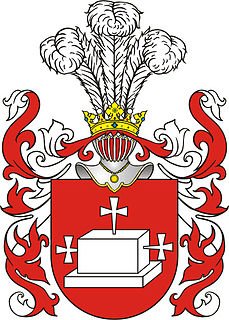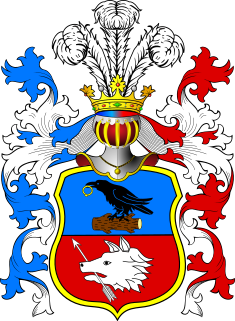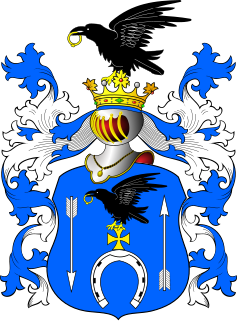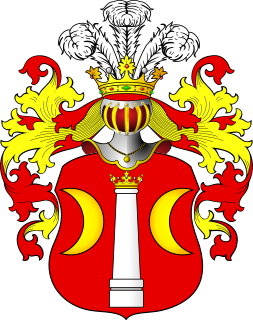This article needs additional citations for verification .(November 2007) (Learn how and when to remove this template message) |
Dryja is a Polish coat of arms. It was used by several szlachta families in the times of the Polish-Lithuanian Commonwealth.

Polish heraldry refers to the study of coats of arms in the lands of historical Poland. It focuses on specifically Polish traits of heraldry. The term is also used to refer to the Polish heraldic system, as opposed to systems used elsewhere, notably in Western Europe. As such, it is an integral part of the history of the szlachta, the nobility of Poland.

The szlachta was a legally privileged noble class in the Kingdom of Poland, and in the Grand Duchy of Lithuania. After the Union of Lublin in 1569, the Grand Duchy and its neighbouring Kingdom became a single state, the Polish–Lithuanian Commonwealth.





















